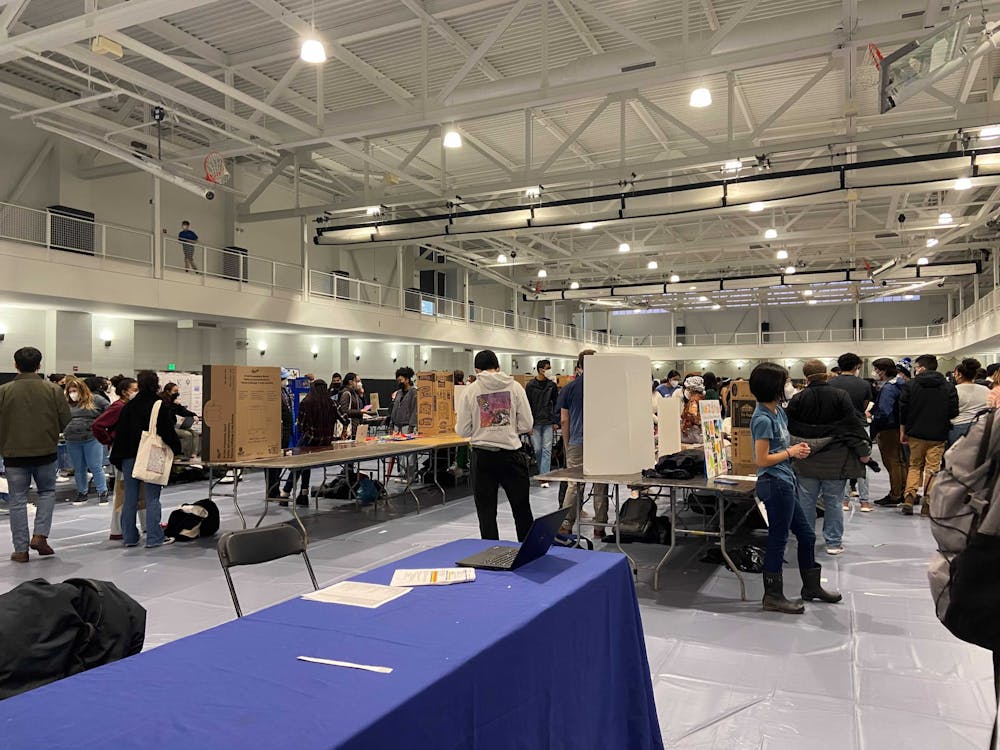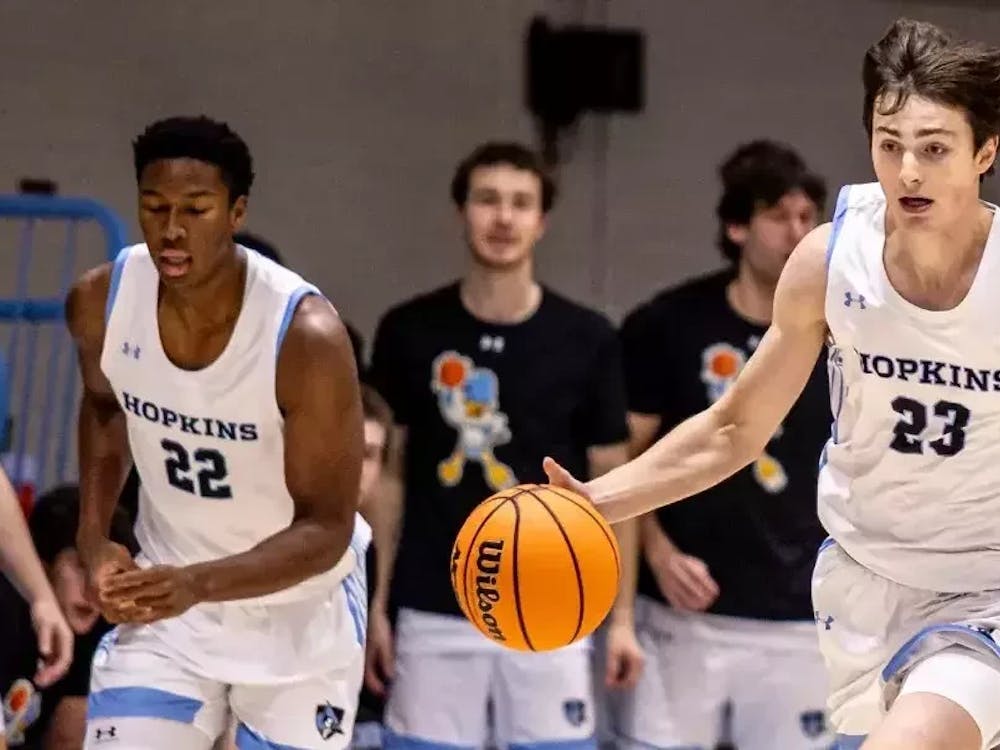Leadership Engagement and Experiential Development (LEED) held a hybrid Student Involvement Fair (SIF) on Feb. 4, the first with in-person booths since the start of the pandemic. Club booths were also available virtually on Hopkins Groups for those who did not to attend in person.
Calvin Smith, Jr., senior director of LEED, discussed the office’s commitment to safely hosting SIF in person in an interview with The News-Letter.
“The LEED staff has been excited about hosting an in-person since we began planning for it last summer,” he said. “We worked with the senior administration to ensure the event aligned with the appropriate COVID-19 mitigation strategies and set forth executing the event.”
Student Government Association Executive Secretary Elaina Regier shared that she was initially concerned about COVID-19 safety during the event but thinks the event ultimately followed COVID-19 protocols.
“All the tables were big enough to be distanced, and everyone that I could see was following the masking requirements, so I’m hopeful that there won’t be a spike in cases after SIF,” she said.
Students like sophomore Emily Grace Kirkwood, secretary of the Taekwondo Club, expressed excitement about the return to an in-person format.
“It was my first in-person SIF, so I was pretty excited,” she said. “It was really nice to see all the different clubs, run into friends who were also representing their clubs and just have an actual 'typical college' event.”
Although appreciative of the return to in-person, sophomore Kiana Bronder, a member of Kappa Alpha Theta, wished that it could have happened sooner.
“I was really excited that there would be a large freshman turnout, but only five or six freshmen came the entire two hours I manned my booth,” she said. “It would be better if [in-person] SIF occurred in the fall, before formal recruitment in the spring.”
Smith noted that SIF was expected to return to in-person last fall but was delayed due to construction in the Recreation Center.
Many students felt that the fair could have been more accessible, citing the limited hours and registration slots. Sophomore Sandy Wong suggested expanding the time slots to encourage a higher turnout. SIF was held from 2 to 6 p.m., which she said was not enough time for students to explore clubs in person, given the space and time restrictions.
Despite the registration requirements, LEED staff accommodated students who did not register in advance and allowed them to enter. Junior Angel Garcia, who wanted to participate in the in-person fair but was unable to, wished that the registration process was made more clear.
“They kind of wasted the effort to try and make it ‘safer’ with the restrictions,” he said. “They should have not made it seem like you wouldn't get in at all without registering because I feel that discouraged a lot of people from attending.”
Some noted that the in-person component made it difficult to find a club they already had in mind. Students like Kirkwood were able to utilize the virtual fair.
“I wanted to visit a specific group’s booth, but I couldn't find them [in person], so I pressed the ‘I'm interested’ button on their virtual booth,” Kirkwood said. “That should be good enough to get me some more info, at least.”
Hopkins Groups reported that 192 groups participated in the virtual SIF and that 1,373 students visited a total of 2,025 booths during the virtual event. Although both the in-person and virtual SIF had a high turnout, several students and organization leaders preferred the in-person format.
Despite the benefits of the virtual component, students like sophomore Janelle Bellot found the physical fair to be more inviting, allowing clubs to be more creative with their approach.
“People could talk about their clubs and show off different things we wouldn't be able to see online,” Bellot said.
Student organization leaders also found the in-person format to be helpful in gaining more exposure for smaller clubs, arguing that with the online fair, students have to actively search for a club.
Wong, a member of Lan Yun Blue Orchids, explained how physical interactions allowed organizers to connect with prospective members.
“People aren’t aware that we had a Chinese traditional dance club, so that might not be something people actively search for online,” she said. “But when people saw us in person and heard about it, many were interested.”
Kirkwood mentioned that being able to engage in conversation face-to-face made it less nerve-wracking for her to join organizations. She preferred the ability to make connections with existing club members and noted that the virtual format is not conducive to making those connections.
Regier agreed, arguing that the virtual fair is less engaging than an in-person one.
“It’s kind of more of a commitment when you see someone at a booth than when you just click ‘I’m interested’ in a virtual fair,” she said.
Smith noted that LEED will continue utilizing a hybrid format in the future.
Garcia suggested alternatives to the current format.
“In previous years, it always felt really cramped and chaotic going to SIF [in the Rec Center],” Garcia said. “I'd really like to see them try doing SIF outdoors maybe, where there is a lot more space.”





